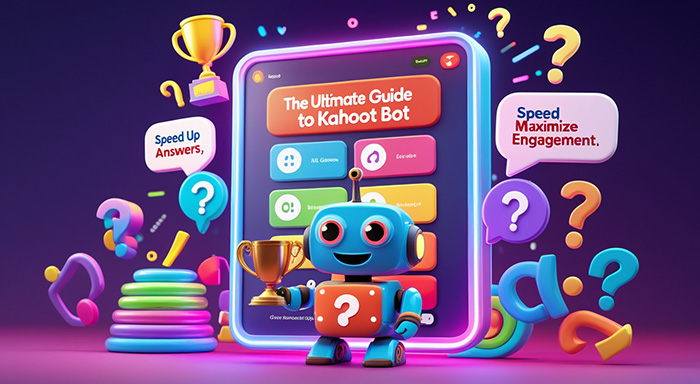
Kahoot has become a classroom and corporate favorite for making learning and engagement more fun through quizzes and interactive sessions. But with popularity comes curiosity, and one term that's been buzzing around is the "Kahoot Bot." Whether you're an educator, student, or tech enthusiast, this guide will explain everything you need to know about Kahoot bots, what they are, how they work, the pros and cons, and the ethical considerations of using them.
What is a Kahoot Bot?
A Kahoot Bot is an automated program or script designed to interact with the Kahoot platform. Typically, these bots are used to flood a Kahoot game with fake players, answer questions automatically, or manipulate quiz outcomes. While the concept may seem amusing to some, it often disrupts the learning environment and violates Kahoot’s terms of service.
Common Features of Kahoot Bots:
- Spam multiple fake usernames into a live Kahoot game.
- Auto-answer questions (correctly or randomly).
- Delay answers to appear human-like.
- Bypass certain security features (like reCAPTCHA).
How Kahoot Bots Work
Most Kahoot Bots operate using simple scripts or web interfaces that mimic real user behavior. When a Kahoot game is live, it has a unique Game PIN. Users enter this PIN to join the session. A bot can be programmed to enter this PIN, generate multiple usernames, and submit answers automatically.
While some bots are hosted online and require no coding knowledge, others are open-source projects hosted on platforms like GitHub. Advanced users often modify these scripts to suit their needs.
Why People Use Kahoot bots
The motivation behind using a Kahoot Bot varies. Some users deploy them for harmless pranks, while others aim to cheat and win quizzes unfairly. However, it's important to recognize that even if the intent is humorous, using bots can severely impact others' experiences.
Here are a few reasons people use Kahoot Bots:
- To test system vulnerabilities (ethical hacking).
- As a joke or prank.
- To gain an unfair advantage in competitive quizzes.
- Out of curiosity or for coding practice.
Risks and Consequences
Using a Kahoot Bot might seem like harmless fun, but it comes with risks and potential consequences:
- Violation of Kahoot’s Terms of Service.
- IP bans or account suspension.
- Disruption of educational sessions.
- Loss of trust between students and teachers.
Educators have grown increasingly aware of these disruptions and are employing measures such as enabling “two-step join,” randomizing order of answers, and using third-party security tools to detect bot traffic.
Ethical Considerations
While the technology behind a Kahoot Bot can be impressive from a coding standpoint, its usage raises ethical concerns. Education is meant to be inclusive, respectful, and collaborative. Using bots to disrupt sessions undermines those principles.
If you’re a developer or student interested in automation, consider using your skills for ethical projects—like building bots for test environments or developing study tools instead.
Alternatives for Ethical Use
Rather than deploying a Kahoot Bot to manipulate games, here are some creative and ethical alternatives:
- Build your own quiz platform to learn about backend systems.
- Create study bots that help you review quiz material.
- Contribute to open-source educational tools.
- Explore game-based learning platforms like Blooket (yes, even the Blooket Bot has seen similar scrutiny).
Final Thoughts
Kahoot Bots may demonstrate interesting technical abilities, but their use in live sessions often leads to more harm than good. Instead of exploiting the system, use your curiosity and skills to build, learn, and support the educational community.
Whether you're an educator trying to secure your Kahoot game or a student interested in bots, understanding the implications of Kahoot Bots helps foster a more respectful and innovative digital learning space.